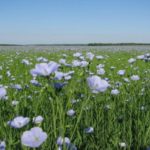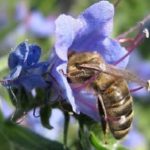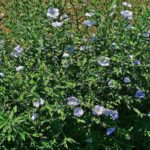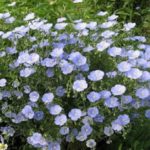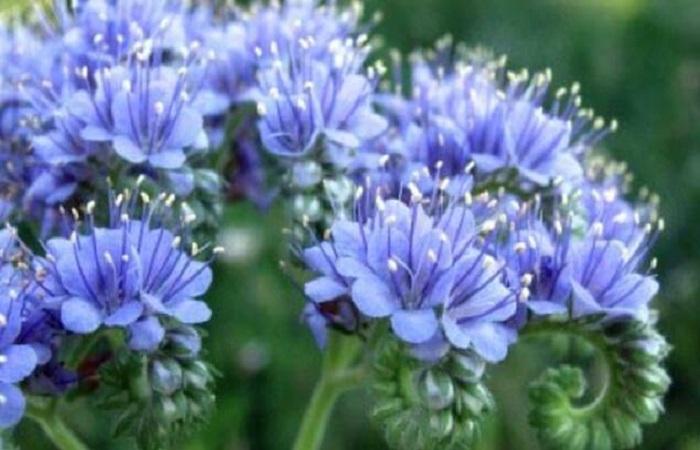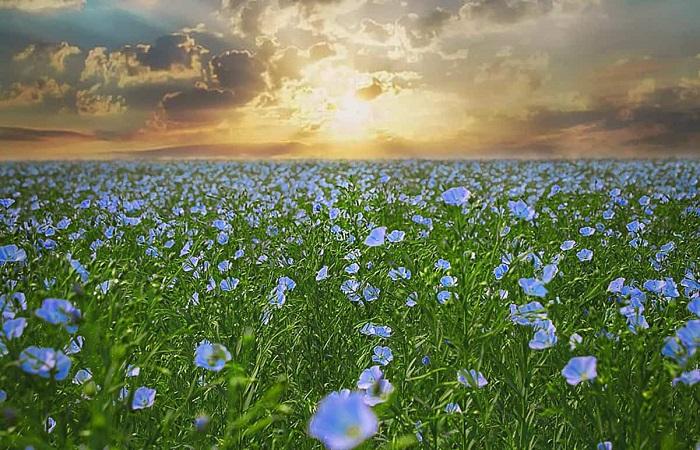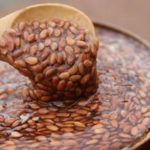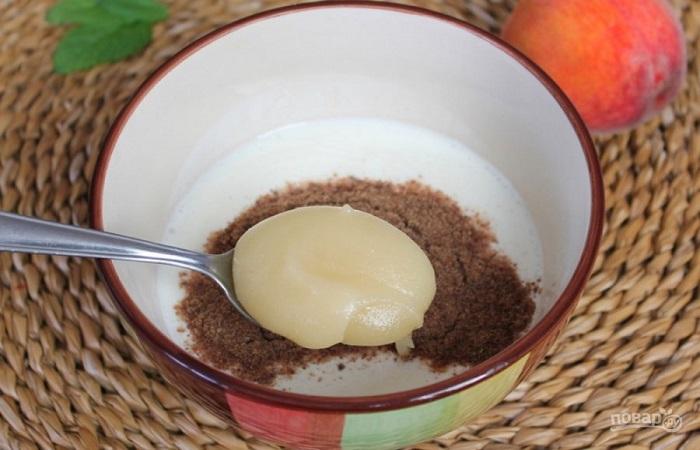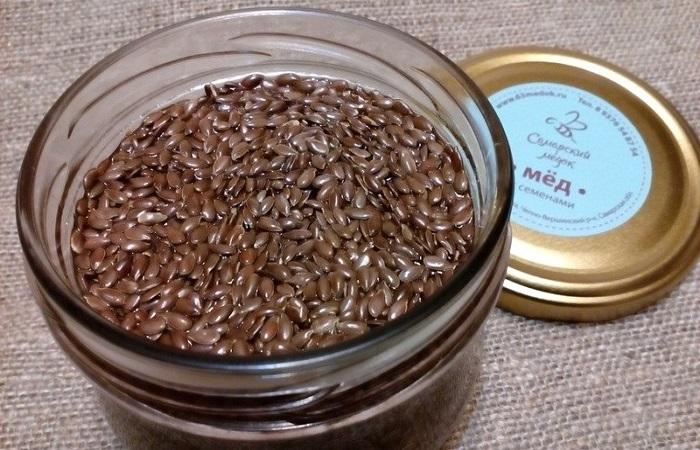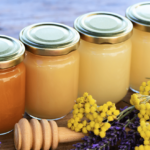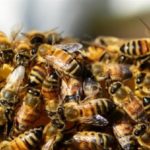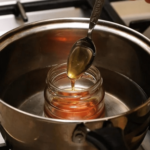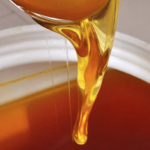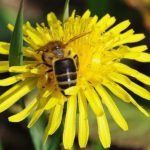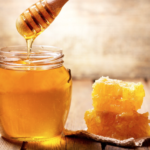Flora includes many plants that differ in purpose and quality characteristics. Among the useful crops are honey plants. Their nectar is collected by bees, later turning it into honey. However, not all plants can be used to obtain bee nectar. Therefore, many are interested in whether flax is a honey plant or not.
Description and appearance
People have been growing flax since ancient times. Its annual varieties come from Western Persia and Transcaucasia. They are found naturally in the southern regions of Russia.Cultivated species are used for the production of natural yarn and oil, which is used in dietetics, industry, medicine, and cooking.
The key crop for agriculture is ordinary spinning flax. There are 2 types of these plants:
- Dolgunets - used for the production of yarn;
- curly – grown to produce valuable seeds.
The most commonly grown flax is an annual herb with a bare stem that is covered with a waxy coating. Its height is 30-60 centimeters. Branching is present only in the upper part of the stems. Here there is narrow-lanceolate foliage, which is distinguished by its regular arrangement.
The upper part is decorated with an umbrella, which includes five-petal flowers. They have a blue color and a grayish tint. The anthers are blue. The fruits are presented in the form of a spherical flax head. It includes 10 small dark brown seeds with a glossy surface.
Common flax is actively cultivated in Russia and Kazakhstan. It is grown on an industrial scale. The culture has tall stems measuring 1.2-1.5 meters, which are dotted with many sparsely spaced leaves.
Flax honey plant or not
Flax can be used as a honey plant. However, in practice this plant is of almost no interest to bees. However, apiaries are involved in increasing the productivity of flax fields.
Plants need cross pollination.Thanks to the work of bees on the field, the yield increases by 40-50%. Insects follow the smell of flowers from 7 a.m. to 12 noon. Therefore, answering the question whether flax is a honey plant, you need to answer in the affirmative. However, the crop should not be considered as the main source of honey.
Honey productivity of the plant
Len provides supporting bribes. This is why bees are characterized by reduced interest in culture. The increased productivity of honey production in flax fields is associated with the expansion of apiaries to crop areas. Pollination of crops is carried out in a cross way. Thanks to the work of bees, productivity increases by up to 50%.
From 1 hectare of flax fields it is possible to obtain up to 30 kilograms of honey. Bees start working at 7 am, but practically do not collect pollen.
Flax honey
Flaxseed honey is practically never found in its pure form, since bees collect too little nectar from this plant. Therefore, this term usually refers to a unique combination of honey and flax seeds. This product can be used to reduce symptoms in various pathologies and as a means of prevention.
The benefits of such flaxseed honey are related to its composition. This product contains the following components:
- Vitamins A and B. They have anti-inflammatory and antimicrobial properties, and also have a slight laxative effect.
- High fatty acid content. These include, in particular, linoleic, palmitic and oleic.
- Fatty natural oils. They accelerate tissue regeneration.
- Dietary fiber, which is required for the normal functioning of the digestive system.
This combination of products is often used as an effective folk remedy. It helps achieve the following results:
- strengthen the immune system;
- reduce the content of harmful cholesterol in the blood;
- remove waste and toxins;
- reduce glucose levels;
- normalize and accelerate metabolic processes;
- normalize sleep, cope with nervous disorders;
- prevent the development of atherosclerosis;
- normalize the functions of the heart and blood vessels;
- start the process of restoring the mucous membranes, which helps cope with ulcerative defects and gastritis;
- achieve general rejuvenation of the body;
- reduce appetite, which helps to get rid of excess weight.
There are several options for making such a composition. So, you can simply put the seeds in honey and chew them. You can also brew the raw material in boiling water and mix it with bee nectar - in this case, the product will resemble jelly.
However, you should not consume too many raw seeds without water or other liquids. This can cause constipation and other serious damage to the digestive tract.
To achieve maximum effect, it is recommended to grind flaxseeds well before mixing with honey. This should be done using a coffee grinder. If you add the raw material in its entirety, it will not be digested by the body. This will lead to the loss of some beneficial properties.
After eating the composition, it is advisable to drink 1-2 glasses of warm water. In this case, the fiber contained in the seeds will have a beneficial effect on the digestive organs and the entire body.
Medicinal properties
It is difficult to judge the benefits of flaxseed honey.The plant is characterized by low honey productivity. This makes it difficult to pump out this product in commercial quantities. It is not advisable to move the apiary to flax fields to collect nectar and pollen. In addition, it is not possible to obtain monofloral honey in the summer.
Flax nectar may be present in late varieties - for example, in sunflower honey. This product has excellent nutritional and healing properties. It should be used to strengthen the immune system, treat colds and eliminate spring vitamin deficiency. The composition is suitable for various cosmetic procedures. They can be used to treat abscesses and wounds on the skin.
Flowering time
Flax blooms in June. Moreover, its flowering lasts 10-15 days. The inflorescences bloom at dawn, and the leaves close by midday. Flowering is more intense in areas of denser planting and high air humidity. Each sown square meter is strewn with inflorescences. Their number reaches 6 thousand flowers.
Flax is a honey plant, but it does not produce too much nectar. However, it is considered very healthy and therefore ideal for inclusion in the diet.

